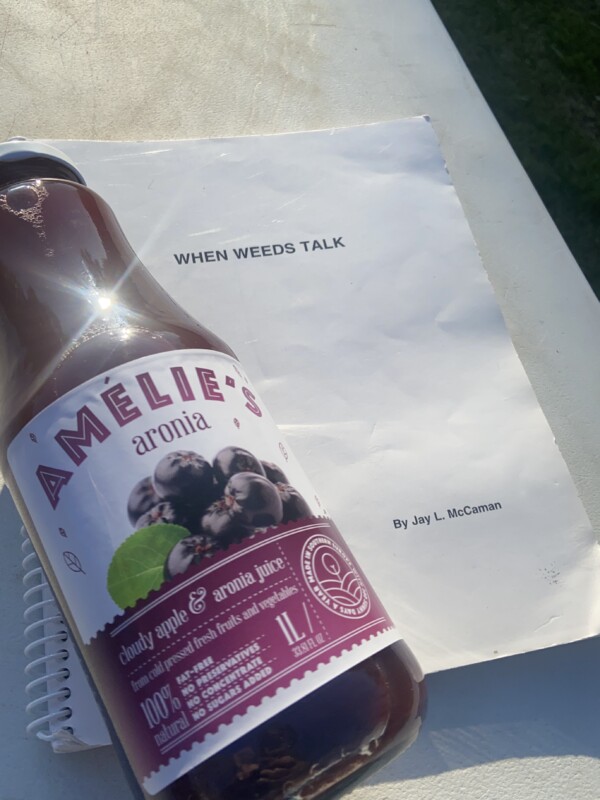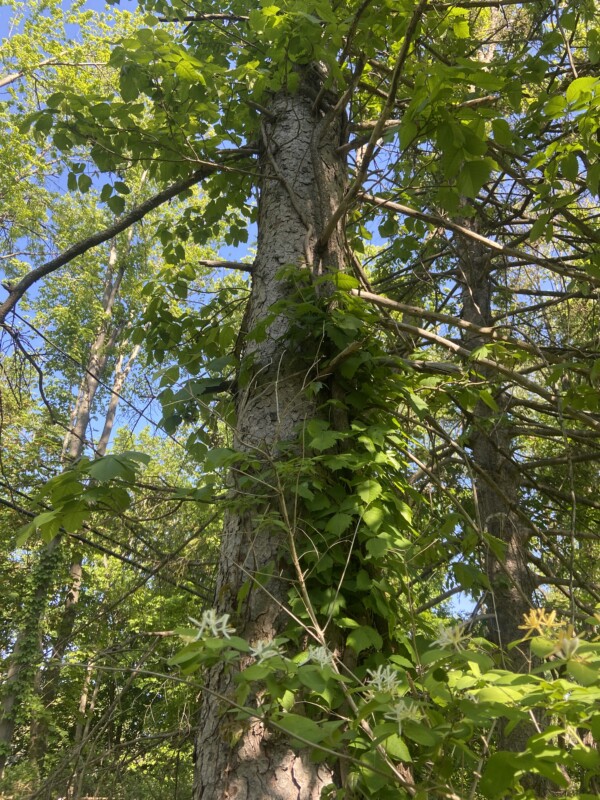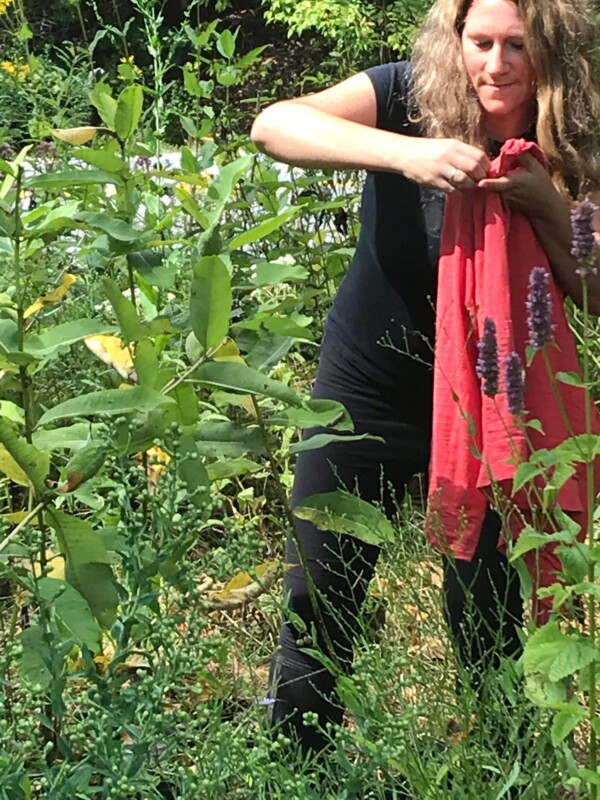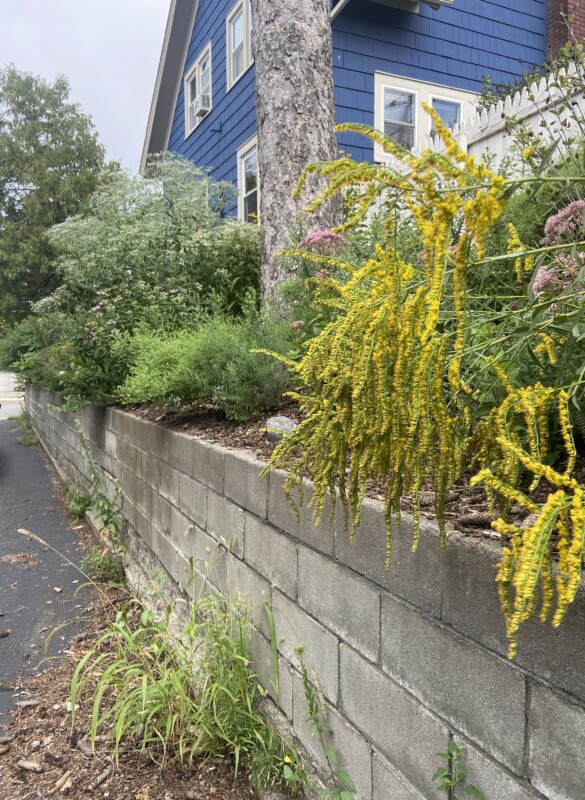
Permaculture Design: When Weeds Talk.
Continued from the invasive plant series. Part I. II. III.
Permaculture Design re: plant interpretation.
Plants spontaneously show up on land and colonize a micro-region sometimes. Usually this is viewed as a headache at best. And yet, using permaculture principles, a weed colony can be interpreted as a communication about soil quality instead. This is true whether the plant is a native species, introduced invasive or a naturalized weed (like Mullein.) “When Weeds Talk,” is the reference book in the above photo. Read it and the long spreadsheets of potential mineral deficiencies in soils will enlighten you. These problems are cross referenced with an extensive plant list. Some of the plants are the worst of the worst invasive offenders. Japanese Honeysuckle, Knotweed, Bishop’s Weed and Purple Loosestrife are all accounted for.

You can study and learn what mineral deficiency each unique weed invasion indicates in a soil. The tree in the photo above is being hugged tightly by both, Japanese Honeysuckle and Poison Ivy. Believe it or not, Poison Ivy is actually an indigenous species! But no one mistakes it for a prize. It is categorized as a weed by almost everyone and indicates specific problems in a soil.
A Permaculture Design View of Poison Ivy.
When Poison Ivy spontaneously colonizes an area, we can know several facts about the soil substrate. Poison Ivy indicates a soil that is low in Calcium and Humus. The soil will be very high in Magnesium. And lastly it will be high in Manganese, Sulphur, Copper, Zinc, Boron, Chlorine and Selenium. So, that’s not a terrible soil on the whole. Obviously advising folks to dump Epsom Salt on Poison Ivy will be counterproductive. “High Magnesium” is Poison Ivy’s happy place. But adding some baking soda to bond with the Chlorine might work. A bag of Garden Lime could add a nice dose of Calcium. Locally banking the yard’s leaf matter for a couple years could slowly add free humus.
The choice to resolve weed infestations with kindness rather than violence is yours to make. It requires strategic thought and planning. Certainly, permaculture design study opens a new worldview. Maturity, patience and awareness of the future are helpful too.
How to hire Jessecology for Permaculture Design Planning:
Certainly, we’d love to meet you! Fill out the “Start Your Project” form today. Shortly, the team will be in touch.



